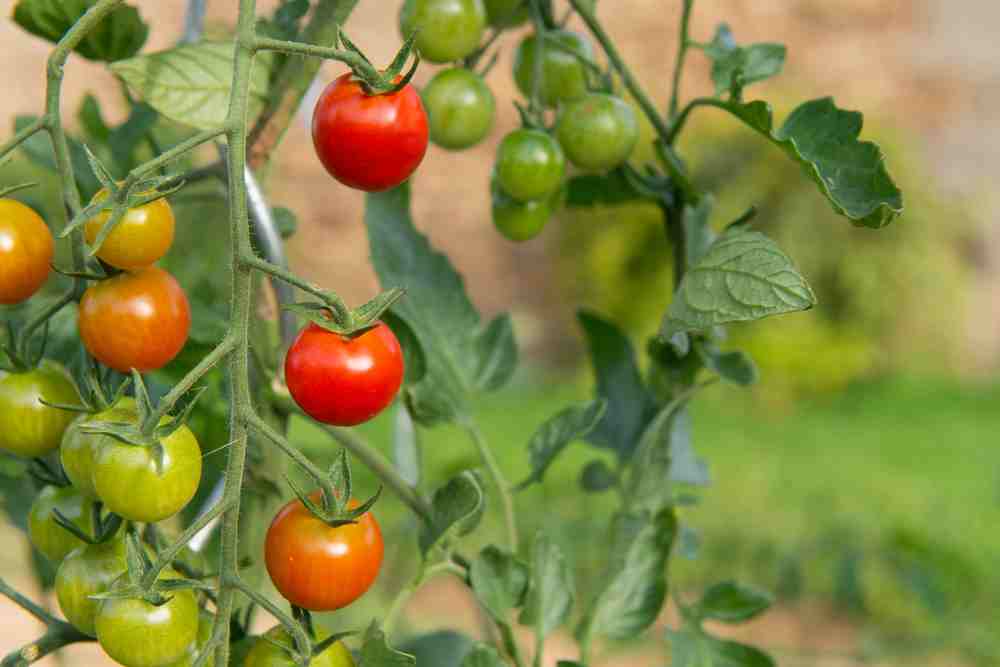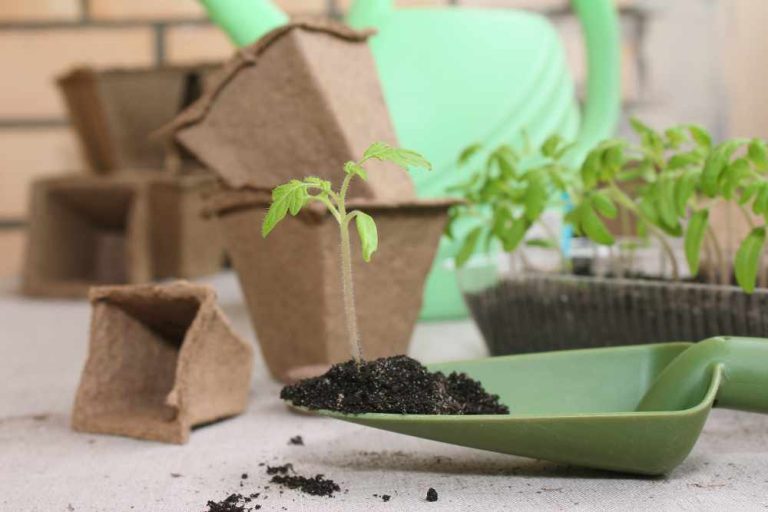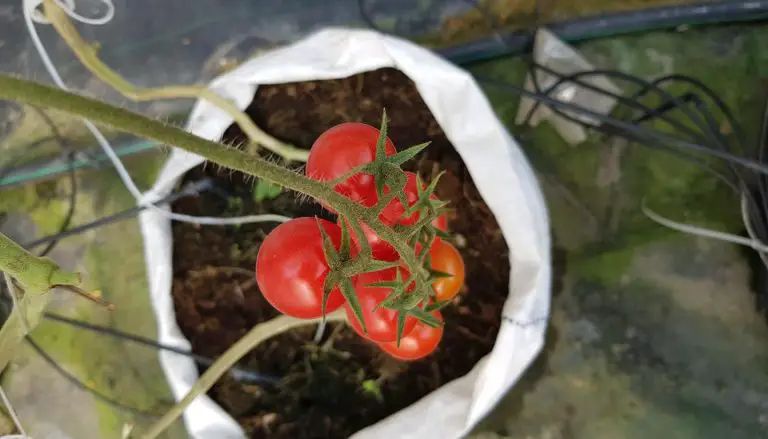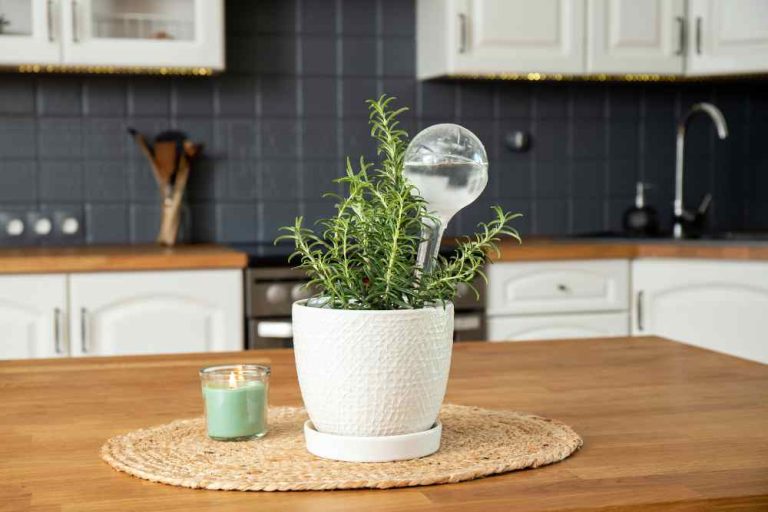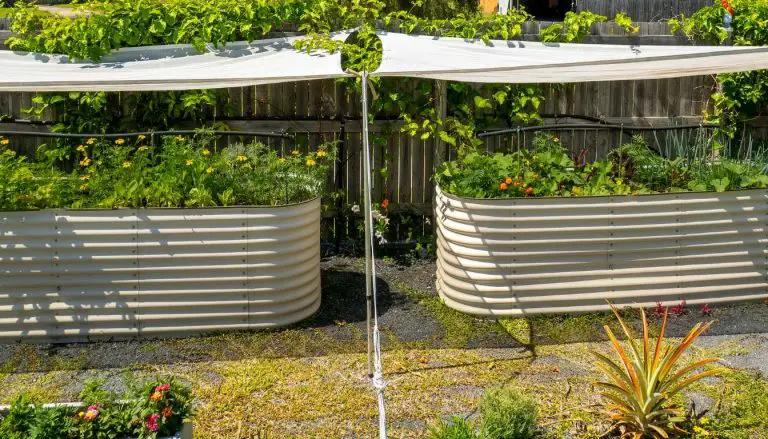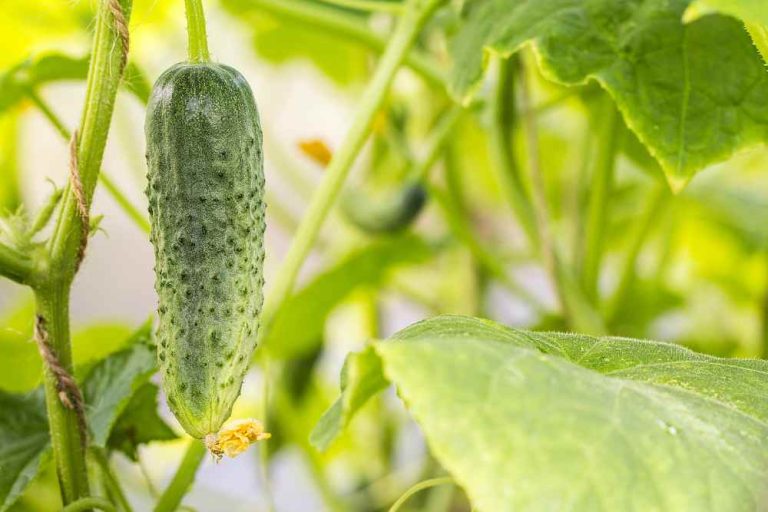How to Protect Tomato Plants and Ensure a Bountiful Harvest ( 8 Methods)
Tomato-Solanum lycopersicum– is one of the most widely farmed crops. Tomatoes can be produced from seed indoors, purchased as young plants, or grown outdoors, in a greenhouse, in pots, or on the ground. These tender plants enjoy a long, hot summer and require a warm, sunny, protected place if planted outside.
They grow exceptionally well in a greenhouse, frequently providing a more excellent and earlier crop than plants grown outdoors. Additionally, they have a lower risk of contracting the blight disease in a greenhouse. To grow healthily, tomatoes do require some care, such as protection from cold, regular watering, and feeding. Therefore If you are knowing how to protect tomato plants will help you protect them from pests and taking a better harvest as well.
However, they are well worth the work when you consider that you can have freshly picked, sun-warmed, and sweetest, juiciest homegrown tomatoes all summer long. A broad range of varieties (Heirlooms, sweets, and so on) is available, which is another fantastic advantage of growing your own. There is a much wider variety of fruits than you can find in a store, with sizes, flavors, textures, and colors to suit every taste.
Therefore, it’s crucial to take precautions to preserve your tomato plants in advance if you live somewhere with pets or wild animals that could unintentionally harm them. By doing this, you can make sure your tomatoes have a chance to grow healthily.
How To Protect Tomatoes From Animals
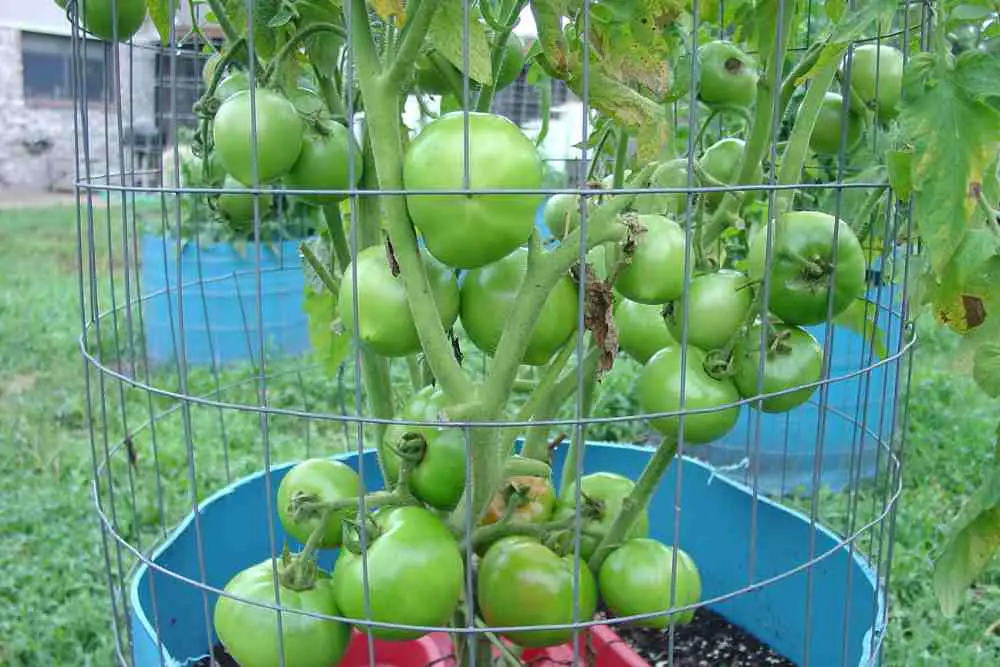
Animals may be the cause of tomato plant eating if birds and insects have been ruled out as the offenders. The majority of gardeners are used to fighting off rabbits, squirrels, or deer.
Pest animals of tomato plants:
- Woodchucks
- Chipmunks
- Gophers
- Opossum Raccoons
- Mice and Voles
Plant damage caused by mice or voles is frequently not discovered until it is too late to rescue the plant. These animal pests only consume the plant’s roots, not the plant’s leaves or other above-ground parts.
In reality, it’s highly unlikely that you’ll ever see a mole or a vole because they almost never emerge from the earth during the day and almost never do so at night. Therefore, it is quite improbable that moles or voles are eating the foliage and fruits of your tomato plant.
Try Raised Beds
Use raised beds to prevent animal pests from consuming your garden’s tomatoes and other plants. Raised beds of 18 inches or higher are difficult for rabbits and other smaller animals to get in. Placing the wood planks at least 6 inches (15 cm) below the soil line is advisable to prevent small animals from simply tunneling beneath the raised beds.
To stop animals from digging into raised beds in your garden, you may also lay down a barrier made of strong hardware cloth or wire mesh. Tomatoes grow quite well in large pots if you have limited space, and they are also too high for some animal pests.
Grow Your Tomatoes In Pots
A tomato plant may flourish in a variety of environments and is incredibly adaptable. Therefore tomatoes can be grown in containers as well. Container gardening is becoming increasingly popular among those who lack an adequate area to plant a traditional garden.
Additionally, container gardening enables homeowners to cultivate their tomato plants in an area that is off-limits to animals. Consider planting your tomato plants in pots on a patio or balcony where your dogs cannot get them if keeping your dog or cat away from them is your main worry. Generally, deer, raccoons, and rabbits stay away from people and pet-friendly locations.
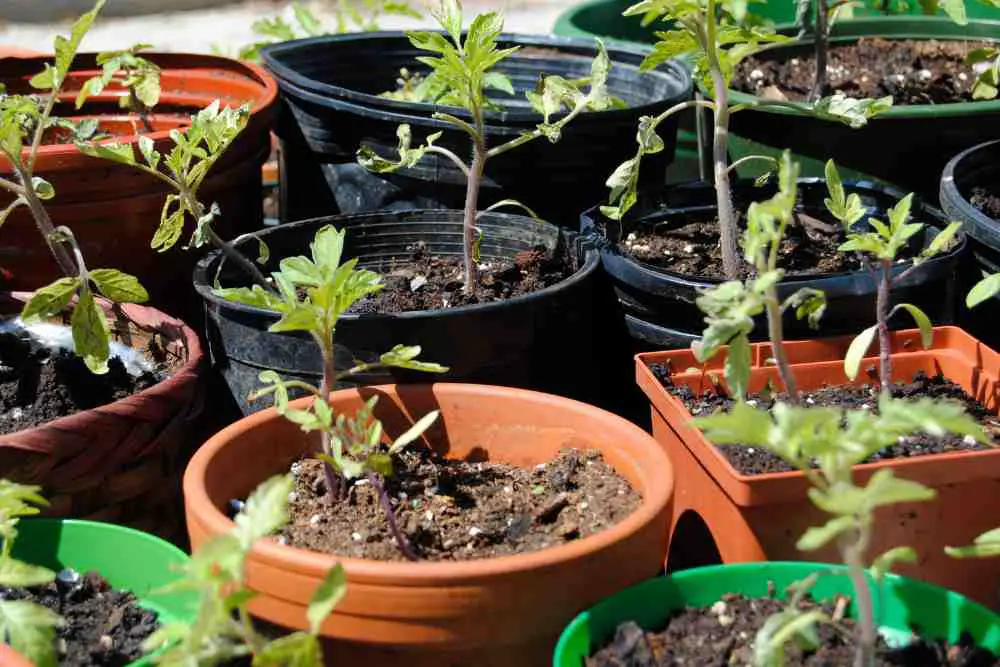
Tomatoes can be grown in pots outside during the day and brought inside for the night if you have a screened-in porch. This allows your pets to roam the yard unchecked while you’re sleeping and keeps the plants secure.
If you’re most worried about wild animals, you can purchase special plant pots for hanging plants that will prevent animals like birds and squirrels from getting to the plants themselves. These containers are made out of a pot for the plants and netting for safety.
Afterward; you can hang your tomato pot from a porch, balcony, or overhang and cover the plant with netting. The net stops birds and squirrels from consuming the fruits of your work. Additionally, it can stop huge insects from harming tomato plants.
Use Garlic
Making your plants smell unpleasant is one of the most effective ways to deter deer and rodents from eating your tomatoes since they dislike the allium family (garlic, onion). A garlic clove should be smashed and placed in a spray bottle with water. Allow it to stand overnight before spraying the solution over the leaves of your plants. Repeat once every week. If you are looking for a more powerful remedy? Get concentrated garlic oil at your neighborhood garden center to add to your water.
Another method: Crush some garlic cloves and place them on an old cloth strip. Attach the strip loosely to your tomato plants or tomato cages. (Many people also advise using slices of a strong-smelling soap in this process) Next, purchase garlic oil repellent clips at your neighborhood hardware or garden retailer.
These clips can be used in numerous contexts and will last the entire season (six to eight months). For example, they may be placed in chipmunk or vole tunnels, attached to fruit trees or berry bushes to deter deer from browsing, or placed at the base of your fencing to keep rabbits from tunneling under it.
Fence In Your Tomato Crop
Consider wrapping the plants in chicken wire to offer each one a little bit of protection. Chicken wire, which is typically employed to keep hens in coops, may keep pests out of your tomatoes.
Chicken wire has the additional benefit of supporting taller tomato plants, preventing them from drooping or falling over. If you choose to use chicken wire to enclose your tomatoes, you ought to think about covering each tomato plant’s top with a wire dome.
Pests like birds can’t attack the plants from above because of this. Larger animals can be effectively kept out of your garden with the help of a little vinyl fence. The local home improvement business sells vinyl garden fencing.
Vinyl fencing is necessary for pet owners with small gardens. Vinyl garden fencing is available in a range of heights to fit the demands of any gardener and is inexpensive and simple to install.
Vinyl fencing also has the added advantage of being aesthetically pleasing. The fence can be ordered in any color and design to go with your house. Your guests won’t instantly notice that you have issues with animals getting into your tomato garden because many people choose to install a vinyl garden fence just for aesthetic purposes. All visitors will see is a comfortable and welcoming garden filled with healthy, fresh tomatoes.
Use a Deterrent Spray
Numerous protective sprays can be used to keep animals from stealing your tomato crop. Tomatoes are unaffected by these sprays, but animals that might try to eat your plants find them unpleasant.
A spray deterrent is something that may be bought locally or made at home using water and hot pepper juice. In addition, a urine deterrent could help you get rid of little pests. Urine deterrents can trick smaller pests into thinking that a larger predator is nearby when they are placed around your tomato plants.
If squirrels and rabbits think a predator is waiting nearby to eat them, they won’t spend the time to create a meal out of your tomatoes. Keep in mind that growing tomatoes is never a precise science. Things that might repel some animals won’t deter others.
Find the best approach for you by combining and using several methods. Once a solution is found, it may be used year after year to guarantee that you have a bountiful tomato crop that is allowed to develop and flourish without being devastated by wild and domesticated animals.
How To Protect Tomatoes From Birds
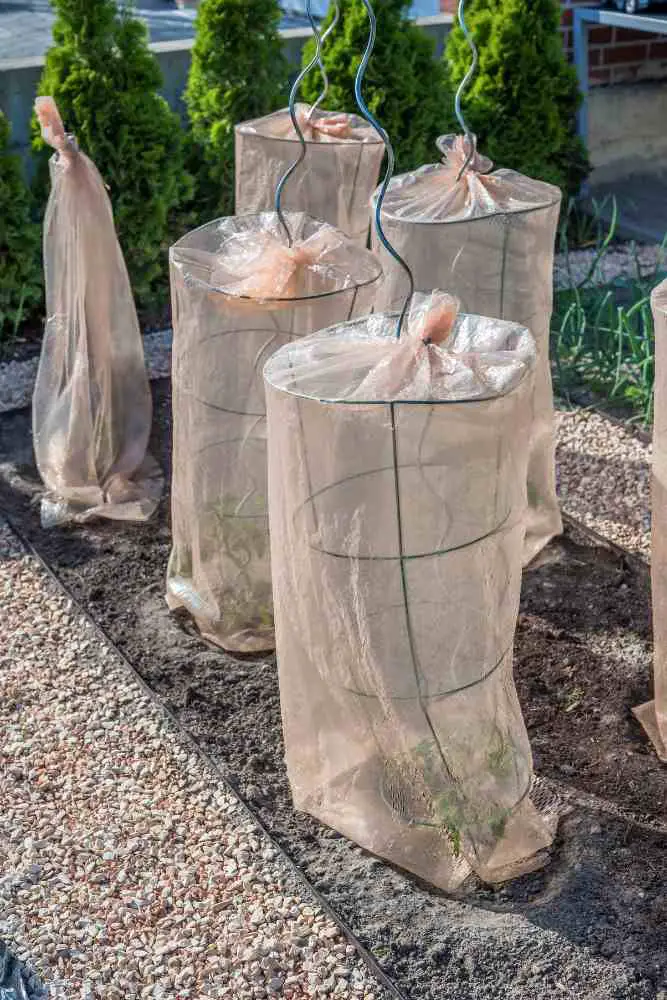
To protect tomatoes use the following simple methods:
First, the presence of a physical barrier prevents the birds from coming anywhere near the tomato plants. Physical barriers could include plant netting, cages, or cloches. The birds will chase after something else if they are distracted. Therefore, you could use seeds, water, or berries to keep birds away from tomato plants.
Birds totally avoid the area around your tomato plants when there are frightening objects nearby. For instance, loud wind chimes, shiny objects suspended from the ceiling, or scarecrows can all scare birds away.
We’ll begin with cloches because they are an effective method of bird protection for tomato plants (among other uses). If you think that your tomato plants will overheat under a plastic cloche, it’s better to use a wire cloche. You can then choose a wire cloche as an alternative. Get some rabbit wire first, then create a fence around your tomato plants with it.
The top piece might need to be covered with another piece, or you could just bend or wrap the wire into a cone. Birds won’t be able to access your tomato plants if you use a wire cloche. However, it might not offer cutworm and other insect pest protection for tomato plants.
Another thing to remember is that a wire cloche by itself won’t shield you from the cold. Of course, you can cover a wire cloche with a blanket to protect it from overnight frost.
You can give them water. If you want to prevent birds from eating your tomatoes, try feeding them anything besides tomatoes in addition to physical barriers. For example, place a bird bath outside and keep it filled with water. Then, the birds can decide to drink from the bird bath rather than consume your tomatoes to obtain water.
Netting is an additional technique for creating a physical barrier to keep birds away from tomatoes. The netting can be wrapped either around a group of numerous plants or around a single plant. Netting is available at numerous garden retailers, including Amazon. If supports are used to hold up the netting, it will be more effective and simpler to operate. Stakes can be used to support netting as well.
First, mark the boundary of the area you want to defend with tall stakes in the ground. Once the plants are completely surrounded, wrap the netting around the outside and over the tops of the pegs. The netting will prevent birds from flying through it and eating your tomatoes. Row covers are an additional option for netting. They will require the same kind of support as netting (cages or posts), but your plants can still get sunlight through them.
Using nets or row coverings to keep birds away from tomato plants has some disadvantages to take into account: It will be more difficult to water, prune, and harvest your plants. Additionally, your plants won’t be accessible to bees and other pollinators.
Although pollination will be hampered, you can still manually pollinate tomato plants. In addition, birds cannot eat pests that feed on your plants because they cannot access them. As a result, the pests that the birds would usually keep at bay could become infested.
To frighten them, use hanging objects. For example, if you wish to avoid feeding the birds and physical obstacles make it tough to care for your plants, you might want to think about scaring the birds away. One method is to utilize hanging things that birds will avoid.
You can use Compact discs (CDs). Tie one end of a string to one, and the other to another, and place it close to your tomato plants, on a stake or branch. Birds may flee if the CD and string are in motion when the wind blows. Additionally, the sun’s reflection may likely frighten birds away when they fly close to the CDs.
Bicycle reflectors and driveway signs can also be used to scare away birds. Using garden twine, you can hang them from thread-like CDs or secure them to posts or branches. Wind chimes produce noise that could scare birds away from your plants. A further “scary” element can be added by hanging CDs or mirrors from the strings of your wind chimes. Reflective tape can be used to try to scare birds away from your plants by attaching it to any hanging object, such as a wind chime. You might need to change your wind chimes or reflectors sometimes because birds can get used to seeing an object in the same spot all the time.
How To Protect Tomato Plants From Frost
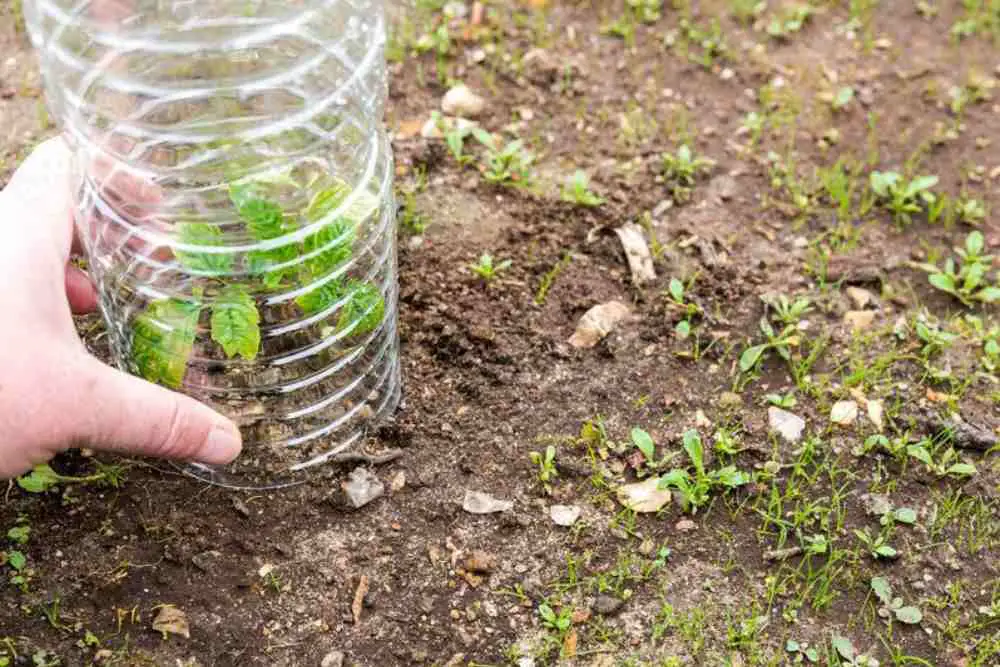
Frost is too harsh for tomatoes. To protect new plants in the spring and older plants in the fall against frost, choose from various forms of frost protection. By making plans in advance, you can be prepared when the weather doesn’t look favorable for tomatoes.
To shield individual plants from cold, use separate plant covers. They are particularly useful if you produce tomatoes in pots or containers, on a patio or balcony, or if you have a small number of tomato plants in your garden. Frost protection with row coverings can shield tomato plants in garden rows from cold weather and frost. The two most frequently used types are tunnel and floating row coverings.
Lightweight fabric sheets called floating row coverings are placed directly over tomato plants. They are appropriate for both mature tomato plants, which can be fairly tall, and spring tomato seedlings, which are short.
This is because you can modify the height when you set them out. Framed row coverings for tunnels Framed row coverings (tunnels) protect a whole row of tomato plants or seedlings. The majority of tunnel row coverings are too short to fit mature fall tomatoes. They work best in the spring to protect tomato plants from late frost. Plants are shielded by tunnels from the wind, the cold, and the frost.
You can use sheets, blankets, and transparent plastic to prevent frost. Some gardeners find success in covering plants with bed sheets, blankets, or sheets of plastic to protect tomatoes from frost in an old-fashioned manner. The layer acts as insulation, blocking off the cold. Removing the coverings during the day and ensuring sure the plastic doesn’t touch the plants, this method requires a little bit more effort.
Tomato plants can be shielded with blankets or bed sheets. If you decide to cover tomatoes with sheets or blankets to prevent frost, be aware of the following:
- Ensure that the fabric is not too heavy to harm plants.
- Ensure that the fabric stays dry. The temperature near the fabric may drop due to evaporation.
- Ensure that fabric is taken down throughout the afternoon so that light can warm plants and soil.
- 29 Bucket Gardening Ideas for a Lush, Compact Garden - October 30, 2024
- 20+ Chic Boho Bedroom Ideas for a Cozy and Stylish Retreat - June 20, 2024
- 12+ Modern Boho Living Room Ideas to Create a Unique Oasis - June 10, 2024

